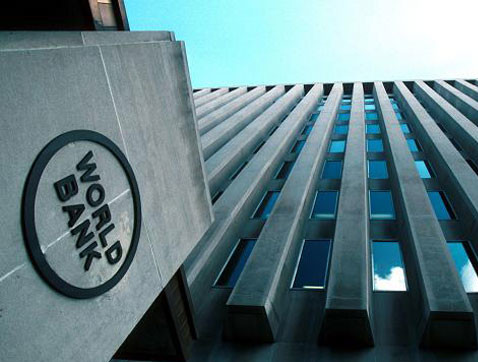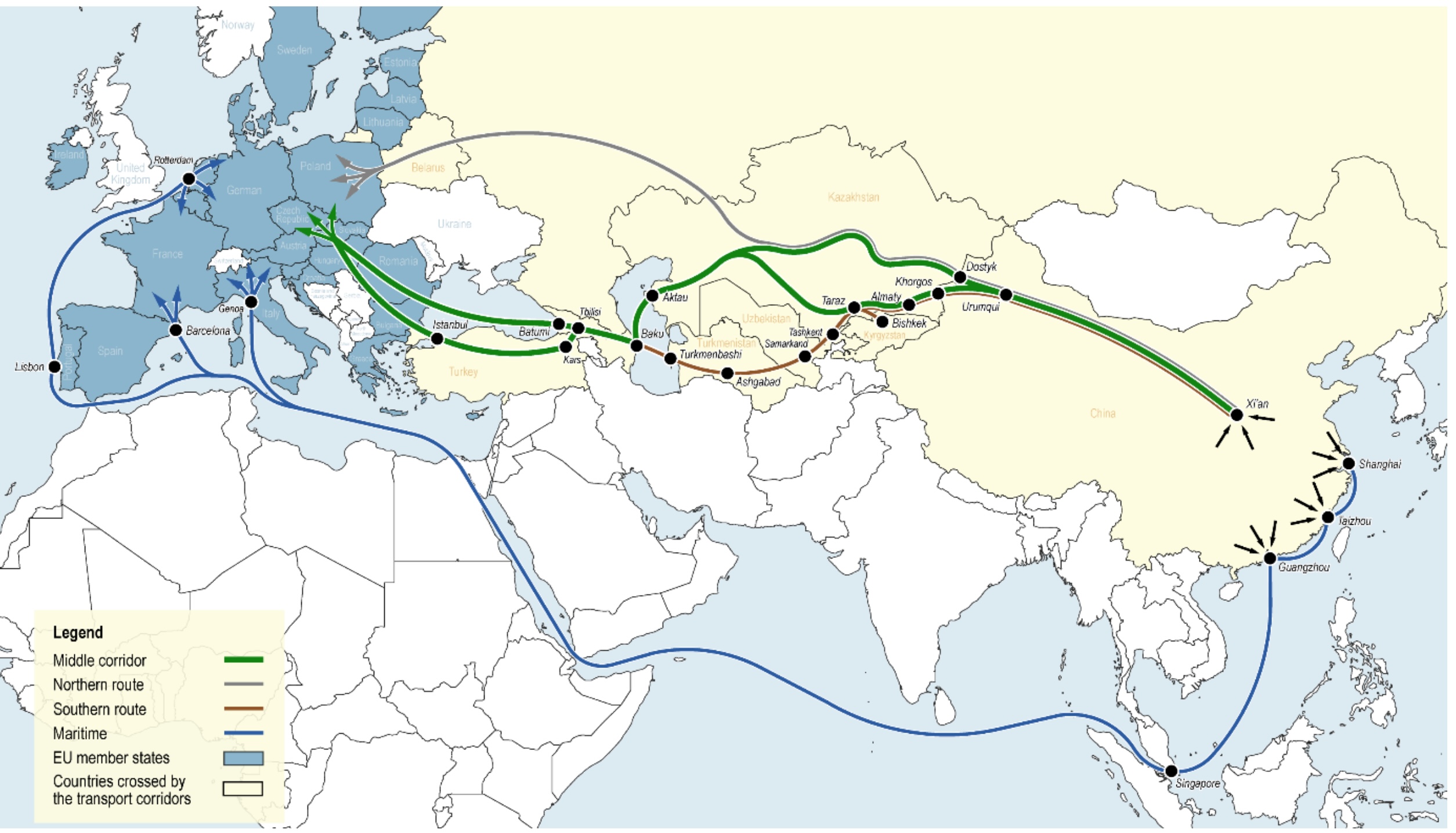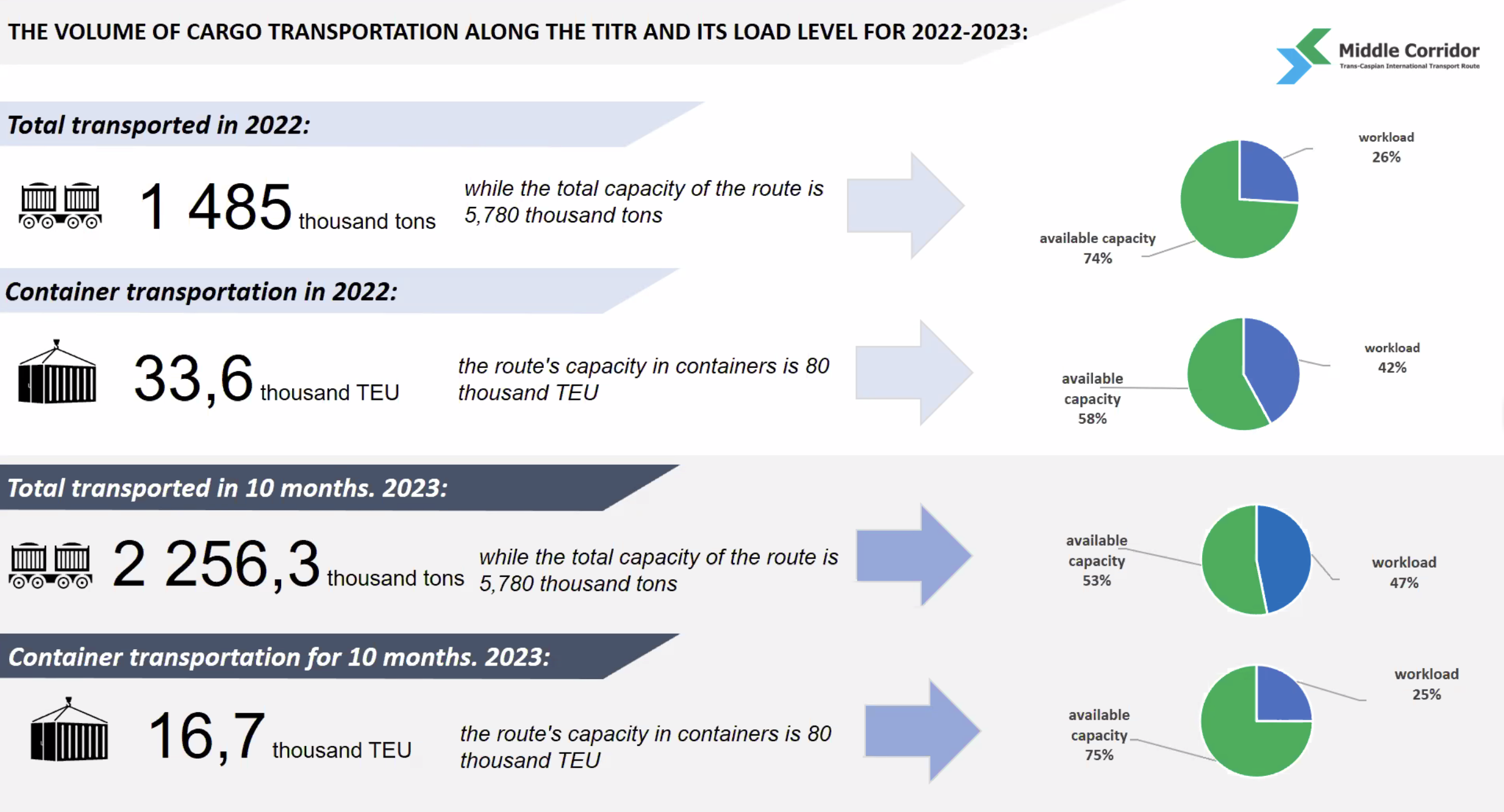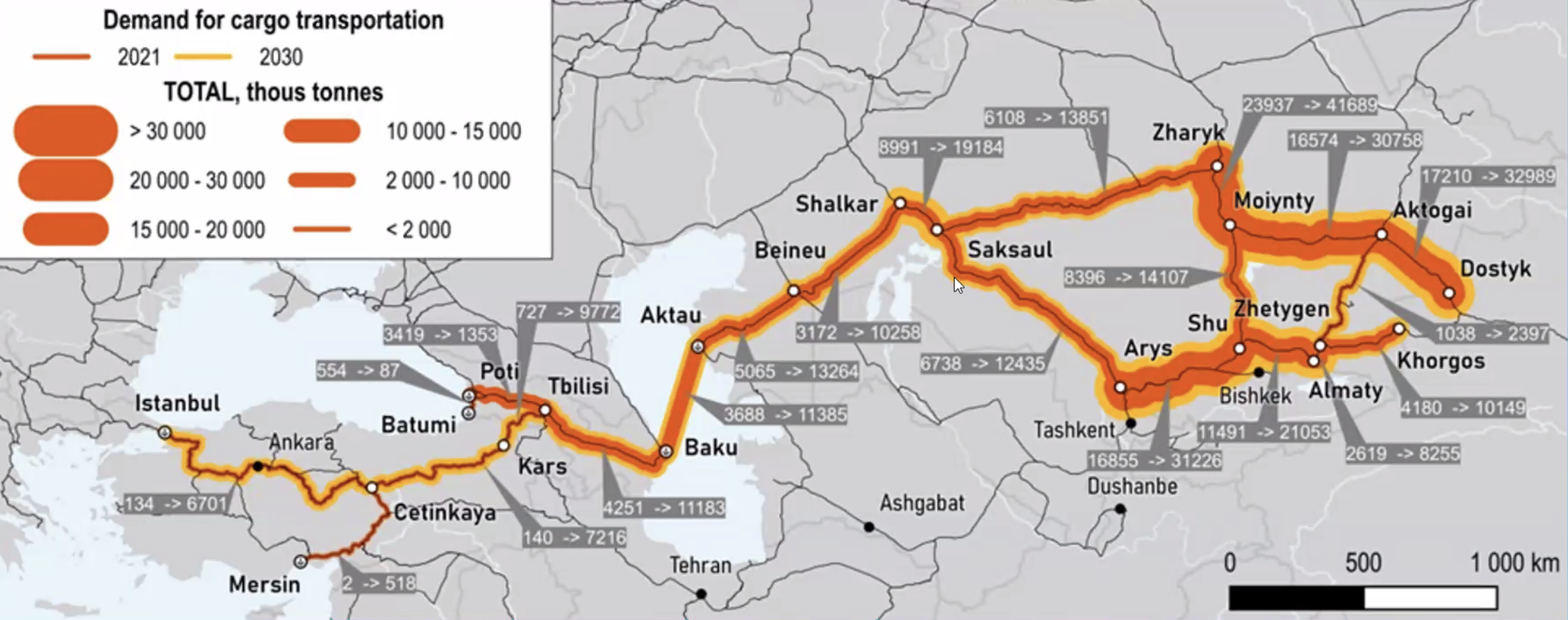ASTANA – Central Asia-Caucasus (CACI) Institute held discussions on the viability of the Trans-Caspian International Transport Route (TITR) on Dec. 5. The performance of a transportation corridor linking Europe to Asia through the Caucasus and Central Asia (CCA) depends on critical investments in trade route diversification, the road and port transshipment improvement, and resolving operational inefficiency.

The World Bank building. Photo credit: www.worldbulletin.net.
TITR, which is known as the Middle Corridor, is a multimodal route. It involves different modes of transport. The corridor starts from Southeast Asia and China and runs through Kazakhstan, the Caspian Sea, Azerbaijan, Georgia, and further to European countries.
World Bank’s findings and recommendations
As part of the webinar, the World Bank presented its report on the TITR development. The study was focused on Azerbaijan, Georgia and Kazakhstan. Proposed measures can reduce travel times along the route by half and triple trade flows by 2030, reaching 11 million tons.

The Middle Corridor route. Photo credit: The Astana Times.
Charles Kunaka, the bank’s lead transport specialist, emphasized the importance of considering the challenges in regard to the route’s “multimodal nature.”
“These three economies [Azerbaijan, Georgia, and Kazakhstan] could maximize the beneficial impacts of tapping into the trade flows by developing logistics along the Middle Corridor and adding value to those flows instead of just exporting the commodities,” he said.
The bank’s findings say that with adequate policies and investments, the corridor can triple volumes while halving travel time by 2030. Secondly, operational interventions can lead to quick improvements through better coordination, transshipment, data sharing, rolling stock, and maritime fleet availability. Third, the infrastructure capacity improvements need to be prioritized and coordinated to ensure investments respond to trade needs.
Finally, the corridor has the potential to attract a much larger share of the China-EU trade, but it will remain primarily regional.
The survey, which was held with the stakeholders of the route, including the shippers of goods, identified that most of the challenges are operational rather than infrastructural.
“The prices are high and variable in addition to transit times that are long and unreliable. The low reliability or low quality of services on the Middle Corridor is a concern. There are also frequent delays, especially at the interfaces between the different modes of transport that are willing to coordinate,” said Kunaka.
The ports, the expert underscored, represent a weak spot, resulting in the fragmentation of services along the corridor. “This affects the pricing, as each service provider is offering a different price for their part of the corridor,” he added.
“There is a need to reform and simplify procedures, especially at the interface points between different modes of transport,” added Kunaka.
To strengthen the Middle Corridor, the World Bank suggests Kazakhstan decrease dwell time in the Aktau Port by improving operations in windy conditions and increasing container shipping capacity on the Aktau-Baku route.
On top of that, it recommends lowering shipping rates and port tariffs for containers, guaranteeing non-discriminatory access to port services for all participants, ensuring the availability of rolling stock, and enhancing shunting operations for continuous and efficient transportation flow.
“There is a room for proper coordination between the governments and the private sector, for collaboration between development banks, other international institutions, the EU, the Group of Seven (G7), and also on a bilateral level between the countries,” the expert said.
Middle Corridor development
Data provided by TITR Secretary General Gaidar Abdikerimov indicated that the volume of cargo transportation along the route for the last year totaled 1.49 million tons.

The volume of cargo transportation along the TITR and its load level for 2022-2023. Photo credit: TITR Secretary General Gaidar Abdikerimov.
As for the first 10 months of this year, he noted that the transportation has exceeded 2.26 million tons of goods, which is 16,700 TEU (twenty-foot equivalent unit) containers.
“In 2022, we have expanded the geography of our route by including three more countries – Singapore, Lithuania, and Bulgaria. Overall, today we have 11 country members and 25 transport and logistics companies,” said Abdikerimov.
These developments, according to him, indicate the increase of global interest in the route.
At the moment, cargo transportation along the route through the Altynkol-Georgian ports is carried out in 19-23 days, which is twice faster than last year. In 2024, it is expected to reduce delivery times to 14-18 days.
Kazakhstan’s plans for 2024
Apart from ensuring cargo delivery times, Kazakhstan’s plans for the next year regarding the Middle Corridor development include setting competitive tariff rates, fixing tariff rates for five years, implementing roadmap items, attracting transit container trains, and creating a unified digital platform.

The increase in volumes will be uneven, with more containers and fewer raw materials as trade flows diversify. Photo credit: the World Bank’s presentation.
Both the increase and the decrease of transportation are observed along the route, depending on the type of goods.
“We can see a sharp increase in transporting petroleum products and a decrease in transit goods from China to Europe and Türkiye,” said Abdikerimov.
He mentioned the 5S concept to be observed by the TITR participants. It stands for stable price, speed, service, sustainability and safety. The new approaches in the corridor’s development, he emphasized, require investments.
There are also several capacity limitations and operational bottlenecks along the Middle Corridor, indicating the lack of a single operating system. Stakeholders use modern information technology solutions, the systems are not uniformly used nor are they integrated.
Expert opinions
“The fact that the World Bank conducted this study is the sign of an increasing interest of multiple stakeholders in the Middle Corridor. It is great to see the bank’s resources applied in the region,” said Brenda Shaffer, the research faculty member at the Energy Academic Group of the U.S. Naval Postgraduate School in Monterey.
The aspect she highlighted as a big geopolitical development is the “emergence of an alliance system between Türkiye, Azerbaijan, and Central Asian countries, mainly Kazakhstan and Uzbekistan.”
“Obviously, after the Russian invasion of Ukraine, there’s even more demand for Azerbaijani and other Caspian gas to come into Europe,” she noted.
Mamuka Tsereteli, CACI senior fellow, called for greater involvement of the EU in the TITR development, saying that “sometimes we forget that Central Asian countries possess resources that could play a very significant role.”
“The EU needs to pay more attention to TITR because of a genuine interest in trade with partners, both from China and Central Asia. We have positive stories in energy development – there is a significant flow of energy from Central Asia and South Caucasus to Europe. This linkage is absolutely essential,” Tsereteli said.
“At the same time, the potential of general cargo transit and transportation is definitely not fully utilized and requires a major attention from both regional countries and international actors,” he added.
Upon the collapse of the Soviet Union, the idea of opening new trading routes across the Eurasian continent emerged immediately.
The insecurity in the Black Sea, the Taliban takeover in Afghanistan, and the closure of trade routes across Russia, Belarus and Ukraine have greatly increased the importance of the Trans-Caspian option.
The stakeholders in the region are now accelerating efforts to establish viable infrastructure links across the Caspian Sea, demonstrating openness and readiness for cooperation.

